How do lab grown diamonds compare to natural diamonds?
Key Takeaway:
- Lab grown diamonds and natural diamonds have similar chemical composition and physical properties.
- Lab grown diamonds are created through a controlled formation process, while natural diamonds are formed naturally over long periods of time.
- Lab grown diamonds are typically more affordable than natural diamonds due to the factors influencing the price difference.
- Natural diamond mining has environmental ramifications and ethical concerns, while lab grown diamonds have a positive environmental impact and ethical advantages.
- Detection methods and certification processes are important for both lab grown and natural diamonds to ensure authenticity and quality.
- Consumer preferences and market trends are influenced by factors such as price, ethical considerations, and awareness of lab grown diamonds.

Photo Credits: Www.Lab-Grown-Diamond-Earrings.Com by Michael Garcia
Understanding the differences between lab grown and natural diamonds is crucial in our increasingly diverse diamond market. In this article, we will explore the importance of this understanding and the purpose behind our comprehensive analysis. By delving into these aspects, we aim to equip readers with the necessary knowledge to make informed decisions and navigate the world of diamonds confidently.
Importance of understanding the differences between lab grown and natural diamonds
Comprehending the contrasts between lab-grown and natural diamonds is vital when it comes to buying or investing in diamonds. It is essential to make decisions based on this information. Lab-grown diamonds are made artificially. Natural diamonds form deep inside the Earth over millions of years. Both kinds have unique properties and characteristics that can influence their value and desirability.
Lab-grown diamonds have the same chemical composition as natural diamonds. This is because both consist of carbon atoms arranged in a crystal lattice structure. To make lab-grown diamonds, scientists recreate the conditions found deep in the Earth’s crust. Natural diamonds are naturally made via a blend of high temperatures and pressures beneath the Earth’s surface.
A noteworthy difference between lab-grown and natural diamonds is price. Lab-grown diamonds are typically cheaper due to factors like lower production costs and rarity. It is crucial to note that factors such as size, cut, clarity, color, and overall quality still affect the price of both.
Diamond mining also raises ecological and ethical problems. Natural diamond mining can damage ecosystems and local communities. It may be associated with human rights abuses in certain areas. Lab-grown diamonds, however, have a smaller environmental footprint and do not contribute to these ethical issues.
Detecting lab-grown diamonds from natural ones is challenging but not impossible. There are several methods for identifying lab-grown stones. These include examining their unique growth patterns or using specialized equipment. Certification is essential in verifying the authenticity and quality of both lab-grown and natural diamonds, giving buyers assurance.
Understanding consumer preferences and market trends is important for those in the diamond industry. Surveys show an increasing interest in lab-grown diamonds. This is partly due to affordability and ethical considerations. The market for lab-grown diamonds has grown in recent years, reflecting changing consumer preferences.
To conclude, this article aims to enlighten readers on the world of diamonds. It discusses their creation processes, environmental and ethical impacts, and consumer trends. We hope to improve your understanding while also presenting it in an entertaining and slightly dark-humored way.
Purpose of the article
This article focuses on the differences between lab-grown and natural diamonds. Both consist of carbon as their primary element. Plus, similar physical properties, such as refractive index and hardness, are found in both.
Lab-grown diamonds are made by recreating the conditions found in the Earth’s mantle. Natural diamonds, on the other hand, take millions of years to form due to intense heat and pressure.
Lab-grown diamonds tend to be more affordable due to their lower production costs and lack of rarity. This makes them an attractive option for many consumers.
Natural diamond mining has a negative environmental and ethical impact. Lab-grown diamonds, however, do not require mining and can help prevent human rights violations.
Lab-grown diamonds can be identified with spectroscopy and imaging techniques. Certifications also exist to verify authenticity and quality of both types of diamonds.
Surveys show a shift in consumer preference towards lab-grown diamonds. Market trends reflect this, with natural and lab-grown diamond choices being available. Factors, such as price, personal values, and desired aesthetics, influence consumer choice.
Chemical and Physical Similarities

Photo Credits: Www.Lab-Grown-Diamond-Earrings.Com by Donald Jones
With chemical and physical similarities being the focal point, let’s explore the composition and properties of lab-grown diamonds compared to natural diamonds. Delving into the fascinating realm of diamond creation, we will uncover the intriguing parallels in their makeup and physical characteristics.
Composition of lab grown diamonds
Lab grown diamonds have a unique composition which sets them apart from natural diamonds. These man-made gems are made in a laboratory using modern tech and processes. The composition of lab grown diamonds is similar to natural diamonds, making them hard to differentiate without special equipment and knowledge.
A table can show the comparison of lab grown and natural diamonds. The table may include:
- Elemental composition
- Crystal structure
- Impurities (if any)
- Isotopic composition
Elemental composition: Both lab grown and natural diamonds are mainly composed of carbon atoms in a crystal structure. But, natural diamonds may have trace elements like nitrogen or boron affecting their color and properties.
Lab grown diamonds usually have fewer impurities than natural diamonds. This is because they are made in controlled environments, where impurities can be reduced or eliminated. Natural diamonds have more impurities due to the conditions where they formed in the Earth’s mantle.
Isotopic composition is the ratio of different isotopes of carbon in a diamond. Natural diamonds have a range of isotopic compositions, while lab grown diamonds tend to have a more uniform isotopic signature.
This paragraph gives an overview of lab grown diamonds. But, there may be other factors or variations not mentioned.
Composition of natural diamonds
Diamonds are renowned for their beauty and value. They have a unique composition that sets them apart from other gemstones. To comprehend their composition, it is important to consider their chemical makeup. Natural diamonds are composed mostly of carbon atoms in a crystal lattice structure. This explains their hardness and durability. Additionally, impurities such as nitrogen or boron can affect their color.
Examining their physical properties, their composition is significant. The carbon atoms are tightly bonded, giving them a high density and refractive index. That is why they sparkle so brilliantly. Moreover, the crystal lattice structure offers them great thermal conductivity.
Their composition makes them rare and desirable in the jewelry market. It is this special chemical and physical makeup that makes them sought-after gemstones globally.
Considering their composition shows why they are so attractive and valuable in both scientific and aesthetic terms. But, it is important to think of alternate options such as lab grown diamonds, which may have a similar composition but different origins and ethical considerations.
Similarities in physical properties
Lab grown diamonds have the same chemical formula, C, and the same hardness rating of 10 on the Mohs scale as natural diamonds. They both have a high level of brilliance and sparkle, a high refractive index, and the ability to separate white light into its spectral colors.
A table can be used to compare their physical properties. It would include columns for composition, hardness, luster, refractive index, and dispersion. Both types of diamonds have carbon atoms in their composition and possess similar physical properties.
Advanced lab techniques like spectroscopy can tell them apart, as they have different atomic lattice structures. This is important for certification and market transparency for consumers.
A couple looking for an engagement ring wanted a lab grown diamond due to its affordability and environmental impact. After conducting research and consulting experts, they were reassured that lab grown diamonds have virtually identical physical properties to natural ones. They chose a stunning lab grown diamond ring that was just as beautiful, durable and sparkly as a natural one.
Formation and Creation Process
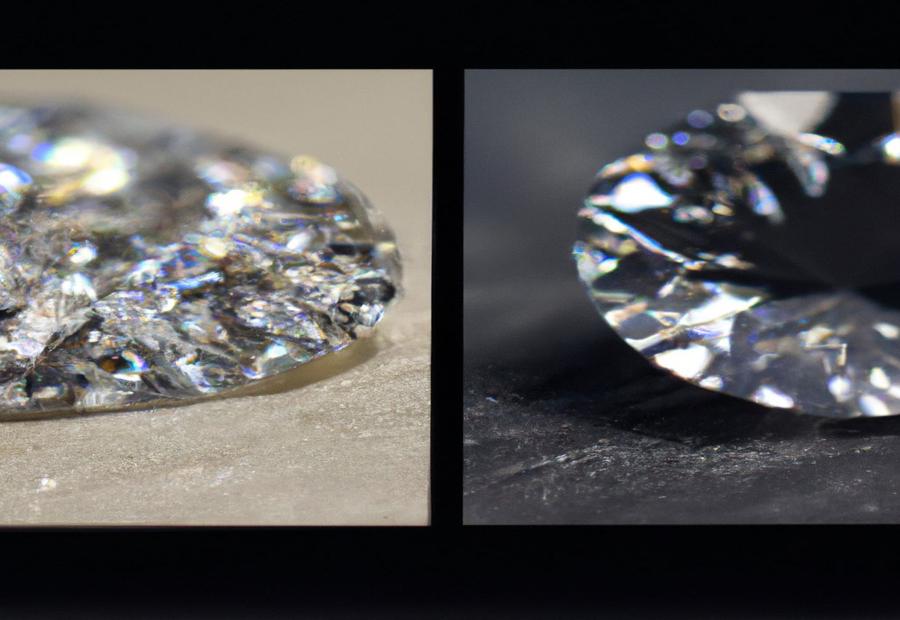
Photo Credits: Www.Lab-Grown-Diamond-Earrings.Com by Bobby Hall
Lab grown diamonds and natural diamonds undergo distinct formation and creation processes. Discover how lab grown diamonds are formed, how natural diamonds are naturally created, and the unique creation process behind lab grown diamonds. Explore the fascinating journey that these diamonds undertake, shedding light on their origin and the techniques utilized in their creation.
Formation of lab grown diamonds
Lab grown diamonds are formed with the help of advanced tech and science. They are cultivated in a lab, replicating the process which happens in the Earth’s core. The ideal environment aids in the growth of crystals, creating diamonds of similar chemical and physical properties as natural ones.
Starting with a tiny diamond seed or carbon source, it is exposed to high heat and pressure. This lets carbon atoms bond layer by layer, forming a crystalline structure. This process can take weeks to months depending on the size and quality required. Cuts and polishes are made to give it the desired shape and brilliance.
These diamonds can be made in various ways, such as High Pressure-High Temperature (HPHT) or Chemical Vapor Deposition (CVD). Each has its own pros and cons, but both end up with high-quality diamonds.
The interest in lab grown diamonds is increasing because of their ethical and environmental benefits. Natural diamonds require mining which can have negative effects, while lab grown diamonds have a much lower environmental impact. Unethical practices while mining such as human rights violations or funding conflicts are also avoided.
Lab grown diamonds offer a sustainable option without compromising on quality or beauty. With advancing technology and growing consumer awareness, the demand for lab grown diamonds will keep rising. So, don’t miss out on exploring this world!
Formation of natural diamonds
Natural diamonds are an incredible phenomenon, formed billions of years ago deep in the Earth’s mantle. Heat and pressure caused carbon atoms to bond together and crystallize, creating a unique lattice structure. Carbon-rich rocks like kimberlite and lamproite are brought closer to the surface through volcanic activity, allowing for the slow growth of diamonds. Inclusions like nitrogen and boron are also incorporated during this process, giving rise to different-colored diamonds.
Each natural diamond is special due to its individual growth history and characteristics. This variety adds to their allure and appeal among the consumers who desire unique pieces. Scientists continue to study these precious gemstones to gain a better understanding of our planet’s geological history. By analyzing them, researchers can uncover valuable data about Earth’s tectonic processes and evolution spanning billions of years – a remarkable feat!
Creation process of lab grown diamonds
Creating lab grown diamonds involves steps similar to natural diamonds. The aim is to have diamonds with the same chemical and physical properties, but in a controlled lab.
Formation: Lab diamonds can be made through chemical vapor deposition (CVD) or high pressure high temperature (HPHT). In CVD, a diamond seed is put in a carbon-rich environment, like methane. It’s then heated and ionized, causing carbon atoms to pile up on the seed and form a diamond layer. HPHT uses a small diamond seed and high pressure/temperature to create a bigger diamond crystal.
Purity Control: Monitored environment makes sure impurities are kept low, resulting in pure and clear diamonds.
Cutting & Polishing: After creating, the diamonds go through cutting and polishing, just like natural ones. Skilled workers shape the rough diamond to enhance its beauty.
Certification: Lab diamonds go through testing to verify their authenticity and quality. They’re graded for color, clarity, cut, and carat weight by gemological labs like GIA.
Market Availability: Technology advancements make lab diamonds increasingly available in the market. They offer a more affordable option with similar qualities as natural diamonds.
Lab diamonds provide ethical and environment-friendly choices, avoiding the negative social and environmental impacts of diamond mining.
These details emphasize the similarities between lab and natural diamonds, while showing the benefits of lab diamonds.
Lab diamonds are like the affordable version of designer shoes, guilt-free!
Price and Affordability
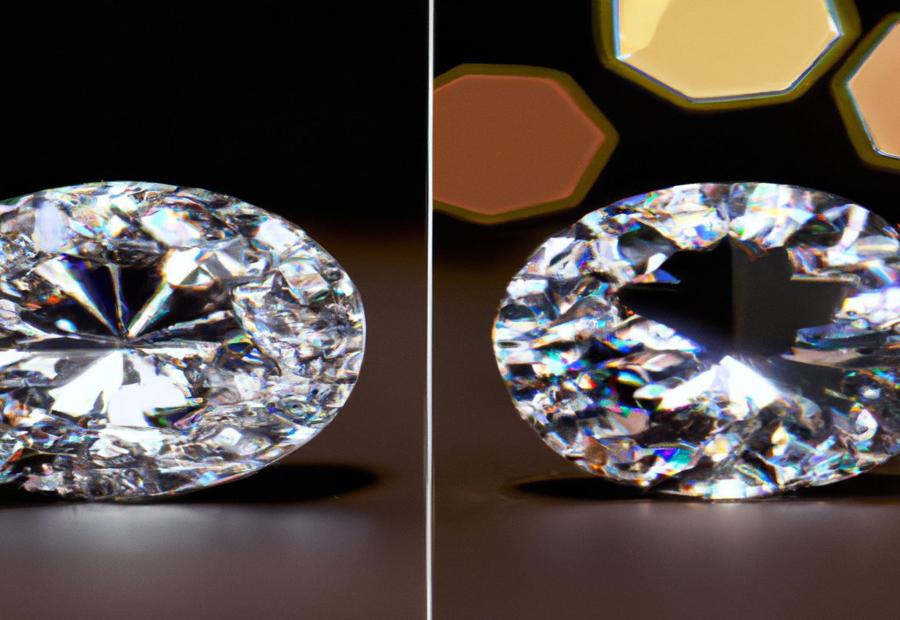
Photo Credits: Www.Lab-Grown-Diamond-Earrings.Com by Bryan Smith
Lab grown diamonds versus natural diamonds – let’s dive into the realm of price and affordability. Discover the intriguing price comparison between lab grown and natural diamonds, the factors that influence the price difference, and explore the affordability of lab grown diamonds. Uncover the fascinating economic aspects behind these shimmering gemstones.
Price comparison between lab grown and natural diamonds
Lab-grown and natural diamonds have a big difference in price. Lab-grown diamonds are more affordable, making them an appealing option. This price gap is down to various factors, such as production costs and demand. Though, lab-grown diamonds still have the same chemical and physical properties.
To show the pricing contrast, a table can be created. It will have columns highlighting the various elements that affect the cost of both types. This table will clearly show how much cheaper lab-grown diamonds are than natural diamonds.
Lab-grown diamonds offer affordability, but there are other things to take into account. Such as the ethical and environmental effects of mining natural diamonds – which raises their price. Additionally, the authentication and certification process for lab-grown diamonds ensures their legitimacy and provides peace of mind.
John was looking for an engagement ring but had budget worries. He discovered lab-grown diamonds and was astonished by their prices compared to natural ones. He managed to find a beautiful diamond within his budget, and without compromising on quality or ethics. Lab-grown diamonds’ affordability and sustainability made John’s decision easy, and he found the perfect engagement ring.
Money talks loud in the diamond world!
Factors influencing the price difference
Factors that affect the price difference between lab-grown and natural diamonds are key to consider when assessing the cost of these gemstones. Composition, formation process, ethical and environmental impact all play a role. So, let’s delve into some details.
| Key Factors | Description |
|---|---|
| Composition | Lab grown diamonds have the same chemical make-up as natural ones. |
| Formation Process | Creating lab grown diamonds in a controlled environment is more efficient than natural diamond formation. |
| Ethical and Environmental Impact | Natural diamond mining affects the environment and raises ethical questions. Lab grown diamonds are better for the planet and involve few ethical issues. |
| Detection and Certification Methods | Detecting lab-grown diamonds is harder due to technology. Certification confirms the authenticity of both lab-grown and natural diamonds. |
Furthermore, other factors impact pricing. Consumer preferences, for example, shape market prices. Trends in the jewelry industry also show a boost in demand for lab-grown diamonds because of their affordability and ethical perks.
A story illustrates this topic. A couple wanted an engagement ring within their budget, while still being ethically conscious. They chose a beautiful lab-grown diamond because it was cost-effective and in line with their values. Price and ethics both influenced their choice of lab-grown over natural diamonds.
Affordability of lab grown diamonds
Lab grown diamonds are becoming increasingly popular. They offer high-quality gemstones at a more accessible price than natural diamonds. Production costs and technological advancements are factors that affect the price of lab grown diamonds, resulting in a lower price point. This affordability has made them a growing trend.
Ethics and environment are key reasons why these diamonds are affordable. Consumers are aware of the ethical concerns related to natural diamond mining. So, they seek sustainable alternatives. Lab grown diamonds are created using advanced scientific processes instead of being extracted from the earth. This ethical appeal, along with their affordability, has led to more consumer interest.
The creation of lab grown diamonds involves mimicking geological conditions for natural diamond formation. Temperature and pressure are controlled to produce lab grown diamonds with similar chemical and physical properties. While these diamonds have similarities, they have distinct growth patterns. Certification verifies the authenticity and quality of the gemstones.
The preference for lab grown diamonds is reflected in market trends. An increasing demand is driven by their affordability. Consumers recognize their value and advantages. A recent survey highlighted the growing trend. So, lab grown diamonds are becoming a viable alternative to traditional mined stones.
Ethical and Environmental Impact

Photo Credits: Www.Lab-Grown-Diamond-Earrings.Com by Sean White
The ethical and environmental impact of diamonds is a crucial aspect to consider. In this section, we will explore the environmental ramifications of natural diamond mining, as well as the ethical concerns associated with it. Additionally, we will discuss the positive environmental impact of lab-grown diamonds and the ethical advantages they offer. By delving into these sub-sections, we can gain a comprehensive understanding of how lab-grown diamonds compare to their natural counterparts in terms of ethics and the environment.
Environmental ramifications of natural diamond mining
Diamond mining has severe environmental effects. It involves extensive excavation and deforestation, resulting in habitat destruction and soil erosion. The use of heavy machinery and explosives releases pollutants into the air, creating air and water pollution. Furthermore, a lot of water is needed for the process, causing water scarcity. These impacts make natural diamond mining a concerning practice.
Deforestation for mine sites leads to the loss of habitats for various species, damaging surrounding ecosystems. Excavation causes soil erosion, impacting agricultural land and water bodies. Heavy machinery used in mining operations releases pollutants into the atmosphere, polluting the air. Explosives used during excavation also release hazardous particles into the air. Chemicals used to wash and process diamonds can contaminate local water sources.
Natural diamond mining needs a lot of water for processes like separating and washing diamonds. In water-scarce regions, this demand puts additional stress on the local community. Lab-grown diamonds, however, are produced using sustainable processes which require less energy and don’t involve extensive excavation or deforestation, resulting in a much smaller carbon footprint.
Ethical concerns related to natural diamond mining
Diamond mining has sparked ethical concerns for a long time. It has been tainted by problems such as child labor, forced labor, and hazardous working conditions in many diamond-producing countries. This has caught attention and demanded more responsible practices in the industry.
One ethical issue is ‘conflict diamonds’ or ‘blood diamonds’. They are mined in regions with armed conflicts, and money from their sale is used to fund violence against governments. The purchase of these diamonds adds to human suffering and fuels conflicts. So, consumers must ask about the origin of their diamonds and promote ethical sourcing practices.
Another concern with diamond mining is its effect on the environment. The extraction process requires extensive deforestation which destroys valuable ecosystems. Also, soil erosion and water pollution are common, hurting local communities and biodiversity. These impacts are irreversible and have long-term consequences. Therefore, it is essential to address the environmental impact of diamond mining.
The Kimberley Process Certification Scheme is a way to manage the diamond industry and reduce ethical issues. Challenges remain in ensuring all diamonds are ethically sourced. People are asking for more transparency and responsibility from companies regarding their supply chains. This is encouraging better traceability and responsible sourcing practices in the industry.
Lab-grown diamonds provide a sustainable and ethical alternative. They are made in a laboratory rather than being mined from the earth. You can enjoy the beauty of diamonds while minimizing the negative effect on nature and avoiding ethical concerns with natural diamond mining. With lab-grown diamonds, you can help create a brighter and sustainable future while still enjoying gorgeous gems.
Positive environmental impact of lab grown diamonds
Lab grown diamonds have a positive environmental impact due to their controlled creation process. This eliminates the need for destructive mining practices and reduces the carbon footprint.
These diamonds are formed by mimicking natural conditions in a lab. This ensures their chemical composition and physical properties are the same as natural diamonds. Moreover, they look virtually indistinguishable.
Lab grown diamonds offer an ethical advantage over natural ones. Natural diamond mining often involves human rights abuses and conflicts. In contrast, lab grown diamonds are produced ethically and sustainably, with no involvement in unethical practices.
Choosing lab grown diamonds saves your wallet and the guilt of supporting unethical practices.
Ethical advantages of lab grown diamonds
Lab grown diamonds are an environmentally-friendly choice. They don’t involve any mining activities, reducing the ecological footprint. Plus, no forced labor or child labor is used. Natural diamonds may come from conflict zones or unethical sources, but lab grown diamonds promote a fair and responsible approach.
It’s essential to ensure authenticity and ethical production processes when buying lab grown diamonds. Look for certifications from trustworthy organizations. By being a careful buyer, you can help unmask impostors and encourage the growth of this ethical industry.
Detection and Certification
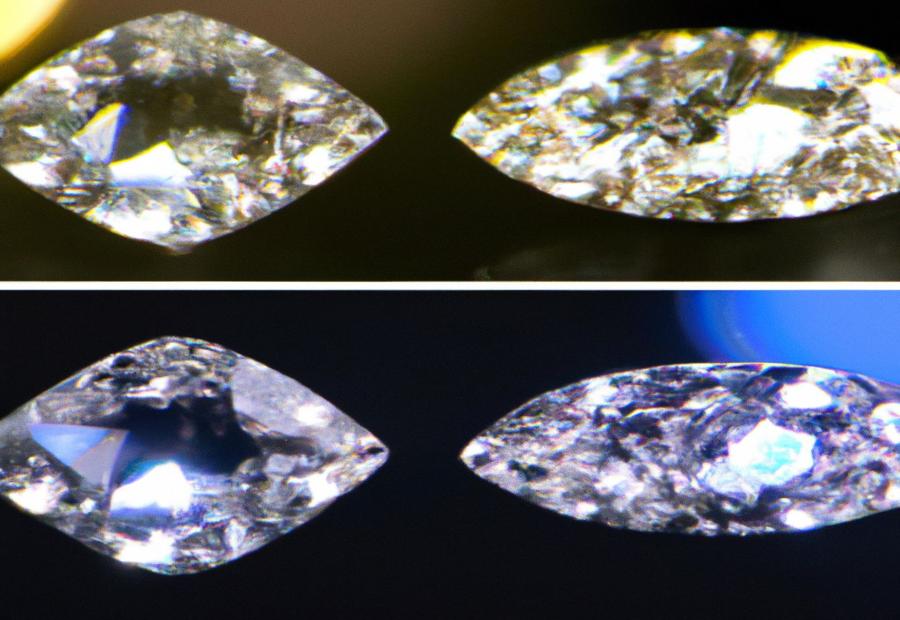
Photo Credits: Www.Lab-Grown-Diamond-Earrings.Com by Alexander Baker
When it comes to lab grown diamonds, detection and certification play a crucial role. In this section, we will explore the different methods used for detecting lab grown diamonds and the certification process involved. We will also highlight the importance of certification for both lab grown and natural diamonds. Get ready to dive into the world of diamond detection and certification!
Methods for detecting lab grown diamonds
Lab grown diamonds can be detected using various methods. These use scientific techniques and equipment to analyse the diamond’s characteristics and figure out its origin. For lab grown diamonds, there are specific methods for detecting them. These methods are key for the integrity of the diamond market.
Advanced scientific equipment helps experts identify lab grown diamonds from natural ones. Incorporating these methods into the certification process boosts transparency and trust. Catch me if you can: Detective methods in the certification process for lab grown diamonds show why anti-fraud techniques are so important.
Certification process for lab grown diamonds
To certify lab grown diamonds, several steps must be taken to guarantee their quality and authenticity. Initially, they are spectroscopically examined to differentiate between natural and lab grown. Then, knowledgeable gemologists assess color, clarity, cut, and carat weight. Afterward, a unique ID and certificate of information about the stone is supplied. Additionally, it is verified that the diamond is sourced ethically. Lastly, they are sealed into tamper-proof packaging to preserve integrity till reaching the customer.
It is worth noting that lab grown diamond certification adheres to the same procedures as natural diamonds. Nevertheless, extra tests may be conducted to distinguish between the two. Lab grown diamond certification provides relief to consumers that they are purchasing bona fide diamonds which have undergone rigorous tests.
Importance of certification for both lab grown and natural diamonds
Certification is key for lab grown and natural diamonds. It ensures authenticity, quality, and value for customers. In the case of lab grown diamonds, certification verifies that they are created in a laboratory, not from the earth. Natural diamonds’ certification confirms that they are genuine and responsibly sourced.
Certification is essential for a few reasons. Firstly, it gives customers accurate info on a diamond’s origin and characteristics. This builds trust between customer and seller.
Plus, it stops fraud or misrepresentation. It prevents counterfeit or treated diamonds being passed off as natural or lab grown. This ensures customers get what they paid for and maintains the diamond industry’s reputation.
Also, it facilitates trade by establishing standard grading systems that are recognized globally. This lets diamonds be traded worldwide with confidence, knowing their quality is verified to industry standards.
Certification has huge benefits. Consumers can buy diamonds knowing they are genuine, with correct info about origins and characteristics. Industry professionals can depend on certifications to guarantee transparency and maintain ethical practices in the diamond trade.
Today, certification is important. Customers have to buy certified lab grown or natural diamonds to avoid any risks or disappointments. Certified lab grown or natural diamonds let customers relax knowing they are making a responsible choice in terms of quality, authenticity, and ethics.
Consumer preferences and market trends: Lab grown and natural diamonds both have their fans, but the choice is personal. It’s like opting for fast food or gourmet cuisine.
Consumer Preferences and Market Trends
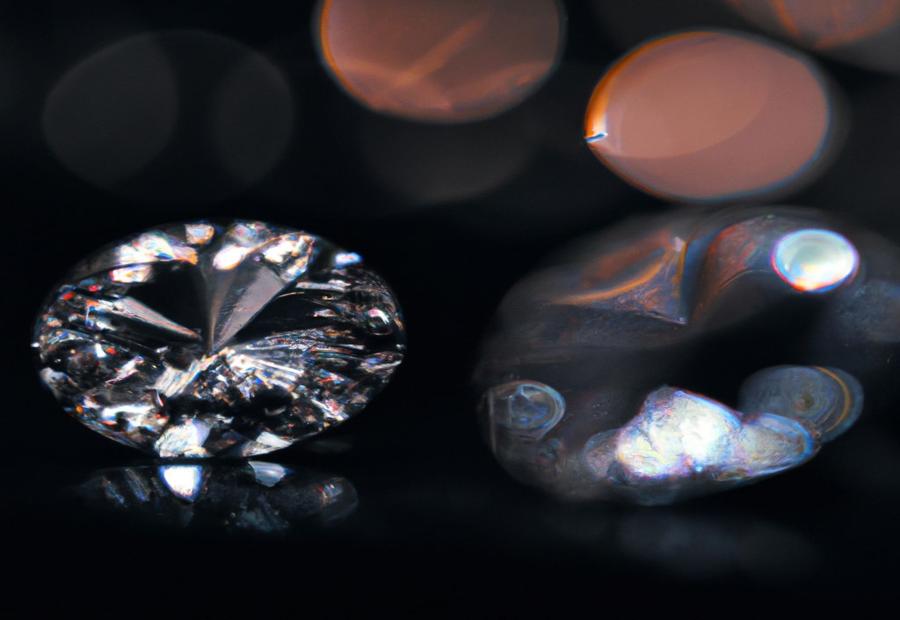
Photo Credits: Www.Lab-Grown-Diamond-Earrings.Com by Philip Thompson
Recent survey data reveals fascinating consumer preferences and market trends in the world of lab-grown and natural diamonds. Discover the latest insights into what drives consumer choices, explore the growing market trends for both lab-grown and natural diamonds, and uncover the factors that influence these preferences. Prepare to gain a deeper understanding of the shifting landscape in the diamond industry and how it impacts consumer behavior.
Recent survey on consumer preferences
A survey on consumer preferences in the diamond industry recently revealed valuable insights. A table can be created to organize the data and show key info, such as:
– Percentage of people preferring lab grown diamonds
– Reasons for choosing one type over the other
– Willingness to pay a premium for them.
However, consumer preferences change with time. Future surveys may reveal new trends, influenced by factors such as advancements in technology or shifts in societal values.
Research shows that millennials prefer lab grown diamonds because of environmental and ethical concerns associated with natural diamond mining. This suggests a potential shift towards sustainability in the diamond industry.
At the same time, many people still value natural diamonds for their rarity and status symbol. Market trends for lab grown and natural diamonds include a preference for authenticity.
Market trends for lab grown and natural diamonds
Lab-grown diamonds have been gaining traction for their affordability and ethical benefits. They provide an option instead of natural diamonds, which are often connected with environmental issues and moral worries regarding mining practices.
Individuals are getting more informed about the positive ecological effect of synthetic diamonds, since they are produced in a managed laboratory atmosphere, without the need for wide mining activities. This has led to an upsurge in need for lab-grown diamonds.
Market trends also suggest that there is still an intense requirement for natural diamonds, particularly among buyers who value their exclusivity and old-fashioned charm. Despite the rise of lab-grown diamonds, natural diamonds still make up a substantial portion of the market.
Factors swaying consumer choices in the diamond market include market trends for lab-grown and natural diamonds, cost, ethical considerations, and individual inclinations. Certain shoppers might prioritize affordability and sustainability when deciding on lab-grown diamonds, while others may select natural diamonds because of their long-standing cultural significance.
Consumer selections are based on a range of elements, from financial constraints to an unexpected fondness for all things twinkly.
Factors influencing consumer choices
When choosing between lab-grown diamonds and natural diamonds, there are many factors that influence consumers. These include price, ethical considerations, environmental impacts, and certification.
Price is a major factor. Lab-grown diamonds tend to be more affordable than natural diamonds. This is because the production costs are lower than those associated with extracting natural diamonds from the earth. However, the rarity and exclusivity of natural diamonds can increase their cost.
Ethical considerations also play a big role. Natural diamond mining has been linked to unethical practices, such as human rights abuses and armed conflicts. Lab-grown diamonds offer an ethical alternative, as they don’t have any negative social or environmental impacts.
Natural diamond mining can have severe ecological consequences. It changes landscapes, pollutes water bodies, and contributes to deforestation. Lab-grown diamonds have a positive environmental impact since they use less energy and don’t cause habitat destruction or pollution.
Finally, certification is an important factor. Both lab-grown and natural diamonds must go through certification processes to verify authenticity and quality. But, it’s important for consumers to opt for certified lab-grown diamonds to guarantee transparency and trust.
In conclusion, when picking between lab-grown and natural diamonds, pricing affordability, ethical considerations, environmental impacts, and certification all influence consumer decision-making.
Conclusion
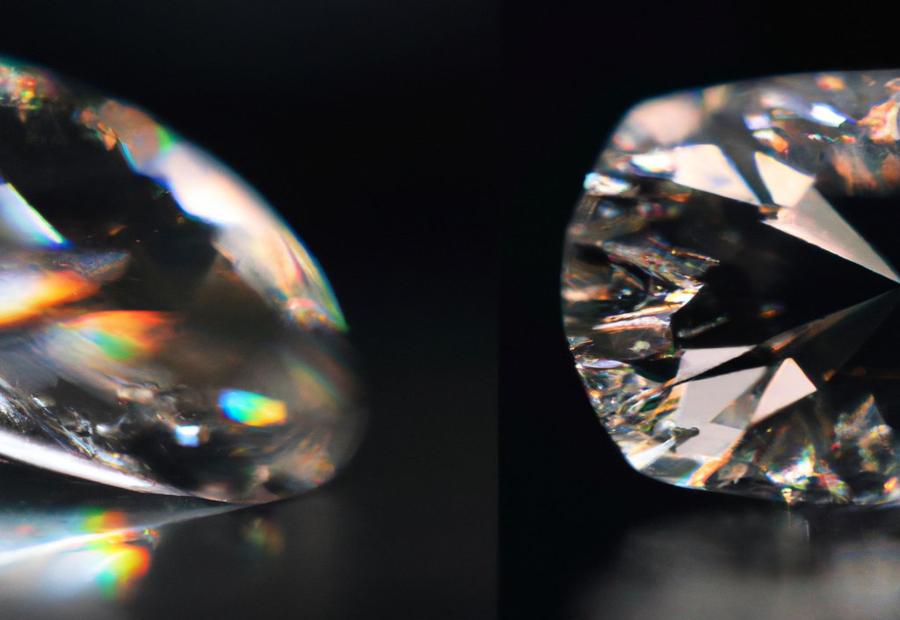
Photo Credits: Www.Lab-Grown-Diamond-Earrings.Com by Austin Rivera
Lab grown diamonds and natural diamonds can be compared in terms of their properties and characteristics. Lab grown diamonds are created in a laboratory, while natural diamonds form over thousands of years in the Earth.
The same physical and chemical properties exist in both types of diamonds, as they are both made of carbon atoms. However, their growth process and appearance are different. Lab grown diamonds are produced through HPHT or CVD processes, while natural diamonds form deep in the Earth.
In terms of appearance, lab grown diamonds can’t be distinguished from natural ones with the naked eye. Both types of diamonds can be cut and polished to enhance their beauty.
Lab grown diamonds have some unique advantages. They are ethically and environmentally produced, with no concerns about environmental damage or mining practices associated with natural diamonds.
Some Facts About How Do Lab Grown Diamonds Compare to Natural Diamonds:
- ✅ Lab-grown and natural diamonds have the same chemical, optical, and gemological properties. (Source: Team Research)
- ✅ The main difference between lab-grown and natural diamonds is how they are created and their ethical and environmental impact. (Source: Team Research)
- ✅ Lab-grown diamonds are created in a lab using a process called chemical vapor deposition, while natural diamonds are formed deep beneath the Earth’s surface. (Source: Team Research)
- ✅ Natural diamonds are more expensive due to their rarity and complex mining operations, while lab-grown diamonds are less expensive because they are not controlled by the same supply chains. (Source: Team Research)
- ✅ Lab-grown diamonds are considered a more ethical choice as they do not contribute to the ecological destruction and pollution caused by diamond mining. (Source: Team Research)
FAQs about How Do Lab Grown Diamonds Compare To Natural Diamonds?
How do lab-grown diamonds compare to natural diamonds in terms of ethics and environmental impact?
Lab-grown diamonds are considered a more ethical choice as they do not contribute to the ecological destruction and pollution caused by diamond mining. However, it is important to note that lab-grown diamonds still require large amounts of energy to be produced. Natural diamonds, on the other hand, are mined from the earth’s surface, which can have humanitarian and environmental repercussions.
Is there a visible difference between lab-grown and natural diamonds?
No, lab-grown and natural diamonds are virtually indistinguishable to the naked eye. Both types of diamonds have the same physical make-up and characteristics, including brilliance, hardness, and thermal conductivity. However, under magnification tools, gemologists can identify small contrasts in inclusions and strains using advanced gemological testing.
What role do mining engineers play in the production of lab-grown and natural diamonds?
Mining engineers are primarily involved in the extraction and processing of natural diamonds. They are responsible for designing, planning, and overseeing the mining operations to obtain diamonds from the earth’s crust. In contrast, lab-grown diamonds are manufactured products created in a laboratory using scientific processes, so mining engineers do not play a direct role in their production.
Are lab-grown diamonds considered environmentally friendly?
Lab-grown diamonds are often marketed as more environmentally friendly compared to natural diamonds. While they do not involve mining operations, lab-grown diamonds require significant energy inputs that are typically derived from non-renewable sources. It is essential to consider the overall environmental impact of the energy sources used to produce lab-grown diamonds before claiming overall environmental friendliness.
Does the Diamond Producers Association support lab-grown diamonds?
The Diamond Producers Association, an organization representing several major natural diamond mining companies, mainly focuses on promoting naturally sourced diamonds. They do not support lab-grown diamonds. The association’s mission is to protect and promote the long-term sustainability and reputation of the diamond industry.
Is a lab-grown diamond as valuable as a natural diamond?
The value of a lab-grown diamond is typically less than that of a natural diamond of similar grade. Lab-grown diamonds are generally more affordable due to technological advancements and increased competition in the market. However, it is important to note that the resale value of lab-grown diamonds is generally lower compared to natural diamonds, which often retain their value or even appreciate over time.

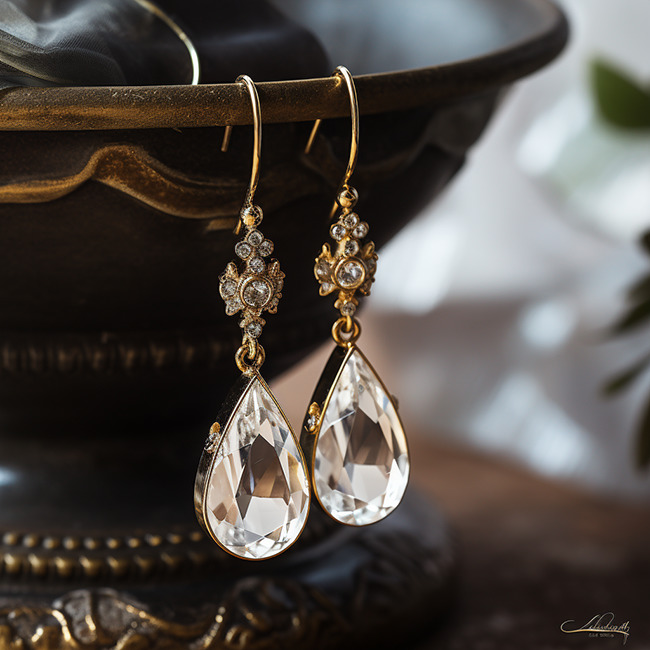
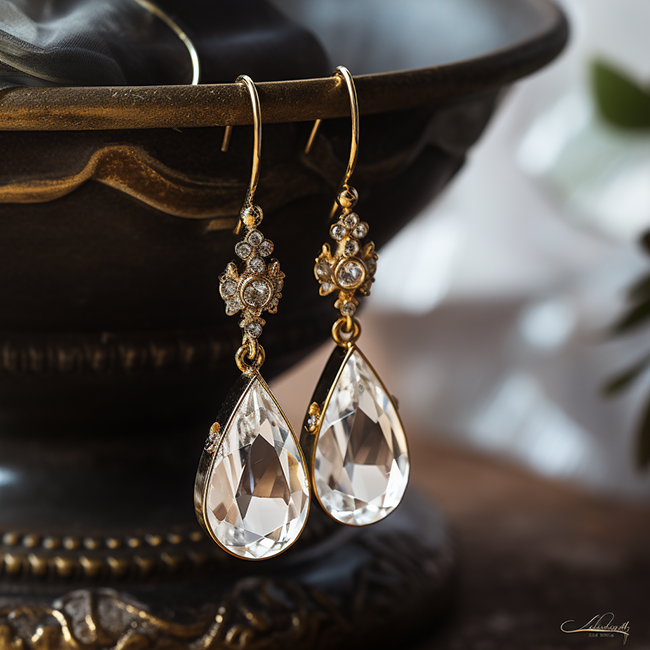
Leave a Reply